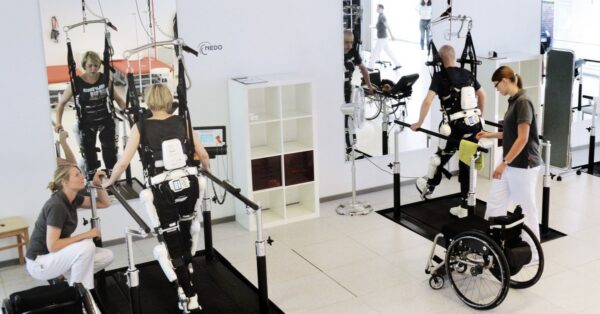Rezaul Begg
Victoria University
Professor Rezaul Begg has been awarded a 12-month Study Melbourne Research Partnerships program grant for his project titled…
Using Machine Learning to Optimise HAL Exoskeleton Joint Control
International Partner: CyberDyne, Japan
Victoria University is one of only a few organisations worldwide to combine advanced biomechanics, robotics, computational intelligence and wearable sensors. CyberDyne developed the world’s first Hybrid Assistive Limb (HAL) exoskeleton. Both organisations have world-class facilities including Victoria University’s Biomechanics Laboratory.
Other research partner: University of Tsukuba, Japan
Older Victorians and stroke patients to benefit from Smart-Exoskeleton
- Victorian knowledge to improve world-leading technology assisting people with disabilities
- Victoria University is one of only a few organisations worldwide to combine advanced biomechanics, robotics, computational intelligence and wearable sensors
- Healthcare applications include serious neurological and musculoskeletal injuries and gait impairments due to stroke, osteoarthritis and diabetes.

Learn more about the other researchers who have also been awarded a Study Melbourne Research Partnerships program grant in 2021.
Combining Victoria University’s innovative ‘smart’ joint-controls with the world’s first Hybrid Assistive Limb (HAL) exoskeleton developed in Japan, could reduce injuries due to falls. The project aims to tailor the exoskeleton to individual patients using ‘smart’ joint-controls, drawing on the University’s expertise in machine learning and gait biomechanics.
Victoria University has an Assistive Technologies research initiative unique in Australia and is one of only a few organisations worldwide to combine advanced biomechanics, robotics, computational intelligence and wearable sensors. They are applying these skills to develop wearable devices to augment single-joint or whole-limb function and minimise injuries due to falls. Healthcare applications include serious neurological and musculoskeletal injuries, older people, and gait impairments due to stroke, osteoarthritis and diabetes.
CyberDyne’s HAL technology uses the impaired individual’s residual muscle activation signals (Electromyography – EMG) to restore physical function; using the EMG signals to control motor-driven joint actuators. HAL has attracted worldwide interest due to its ability to assist individuals with profound movement disabilities and has been registered by the Australian Therapeutic Goods Administration. CyberDyne is seeking opportunities to further develop and market HAL in Australia and will contribute their expertise in the design and manufacture of powered exoskeletons. The company was established in 2004 by Professor Yoshiyuki Sankai, a distinguished control and systems engineer at the University of Tsukuba.
Research into assistive technologies and stroke rehabilitation, supported by the project’s connections with Western Health and, potentially, the new Footscray Hospital, offer clear pathways to collaborative product development and clinical applications of HAL.